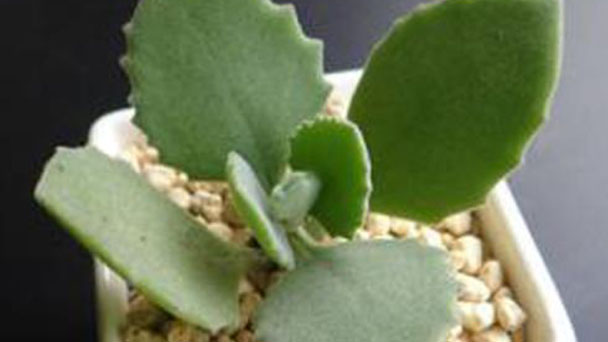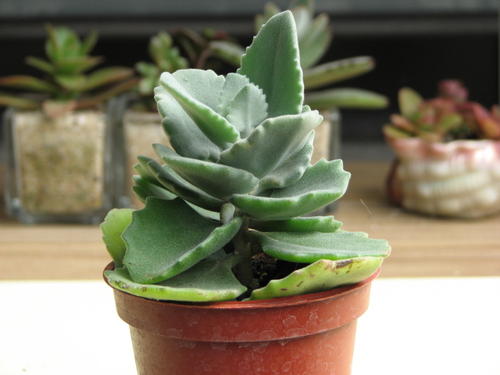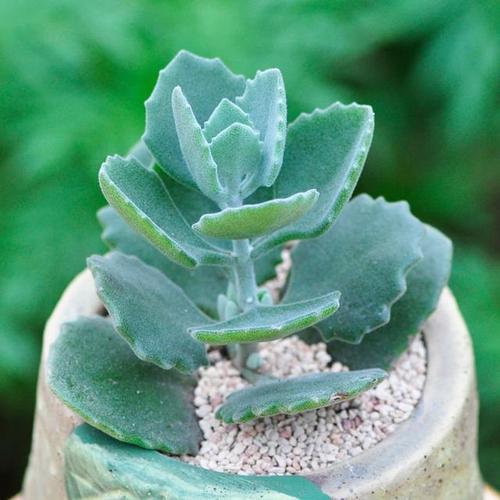Kalanchoe Millotii Care & Growing Tips
Written by Maggie
Nov 03 2021

How to grow and care for Kalanchoe Millotii? The stems are easily lignified and like the sun very much. They can be moulded by cutting off water. They grow almost all year round. Now, here's how to grow and care for Kalanchoe Millotii.
Kalanchoe Millotii Soil Care
Kalanchoe Millotii likes loose, fertile, sandy soil with good drainage. When we grow and care for Kalanchoe Millotii, we can have a mixture of leaf rot with peat ash and a pinch of bone meal.
Kalanchoe Millotii Light Requirements
Kalanchoe Millotii likes the light and when the light is good the leaves turn white and when the light is low they turn green and slowly collapse. When we grow and care for kalanchoe Millotii, usually to full sunshine or slight shade, in the summer, to avoid exposure to the sun, pay attention to ventilation.

Kalanchoe - Most Common House Plant
Kalanchoe Millotii Temperature Care
Kalanchoe Millotii is heat tolerant but not cold tolerant and can tolerate light frost damage. In winter, it should be maintained in a place with better indoor light, especially in northern areas, and pay attention to cold protection and warmth. When we grow and care for Kalanchoe Millotii in high temperature weather in summer, attention should be paid to ventilation and cooling.
Kalanchoe Millotii Watering
Kalanchoe Millotii grows faster and it's pretty much all year round, so make sure you have plenty of water. Watering too much or too little will cause the leaves to fall off. When we grow and care for Kalanchoe Millotii in the spring and fall growing seasons, the soil should be completely dry before watering, and summer watering should be moderate.

Kalanchoe Millotii Repotting
Kalanchoe Millotii does no longer want universal repotting. It can thrive properly in the equal container for years. However, a popular rule is to repot all kalanchoe succulents each and every two years, it will furnish a fertile potting medium to the succulents with lots of nutrients. Even if your Kalanchoe Millotii has finished 2 years in the equal container and is developing wholesome nevertheless you ought to repot into new containers.
Kalanchoe Millotii Propagation
Kalanchoe Millotii can be propagated via leaf and stem cuttings.
To take the Kalanchoe Millotii cuttings use a smooth sharp scissor or gardening shears. Gently reduce the Kalanchoe Millotii plant phase you desire to propagate. Let the reducing take a seat at a heat dry location for two to three days. It will enable the cuttings to boost callous at the reduce end.
Fill the containers (in which you want to propagate the succulents) with a trendy succulent mix. Place the Kalanchoe Millotii cuttings at the pinnacle of the pre-moistened potting soil (a combine sand, perlite, and peat moss). Keep misting the cuttings in many instances 5 to 6 instances a day and additionally hold the soil evenly moist. The cuttings want greater water till they set up in the soil. But do now not overwater it will rot the cuttings.
Put the pots close to a window with oblique sunlight. Avoid publicity to shiny direct daylight till the Kalanchoe Millotii succulents are set up in the soil. The succulents will begin rooting after two to three weeks and will be prepared to transplant into new containers.
Kalanchoe Millotii Tocixity
Generally, all Kalanchoe succulents are poisonous to pet animals, birds, and livestock. They should be stored out of the attain of kiddies due to the fact they can purpose belly upset.
Kalanchoe succulents include cardiac glycosides that are poisonous to pet animals. If you are preserving pets at home, it is suggested to preserve the Kalanchoe Millotii succulents away from cats and puppies due to the fact if they consume up any plant phase it can lead to serious consequences.
The pets will begin growing various signs and symptoms after ingestion such as diarrhea, vomiting, exchange in coronary heart price and rhythm, belly upset or pain, and immoderate slobbering.
If you look at any of the above-mentioned signs of poisoning take your pet right away to an professional Veterinarian.
Kalanchoe Millotii Disease & Pests
Kalanchoe Millotii is pretty tolerant of insect pests. Mealybugs and aphids can be every so often found attacking the indoor plants. However, these bugs are now not a very huge problem. You can manage the infestation without problems if you are fortunate adequate to spot the hassle at an early stage.
It is endorsed to use 70 p.c isopropyl alcohol or neem oil spray to get rid of these tiny bugs. The stems and leaves of the Kalanchoe Millotii succulent have to be rubbed with isopropyl alcohol to preserve the bugs away. If the infestation is very severe, you can use a non-toxic insecticide spray.
Another huge hassle with all Kalanchoe Millotii is overwatering. You may additionally trip this trouble if you have by chance ended up overwatering your succulent. Overwatering will increase the probabilities of fungal illnesses of the succulents. Therefore, optimize the use of water to keep your succulents from the havocs of overwatering.
Latest Updated
- Benefits of Bugleweed - 7 Science-backed Health Benefits
- Bugleweed Dangers & Side Effects - Is It Poisonous?
- How to Plant Evergreen Trees - What You Should Know
- When to Plant Evergreens - Grow Guide for Evergreen Trees
- 12 Wonderful Evergreen Shrubs for Your Garden
- 12 Popular Evergreen Plants with Pictures for Beginners
- When And How To Prune A Lilac Bush Like a Pro
- How to Grow & Care for Lilac Vine (Hardenbergia Violacea)
- Japanese Lilac Tree (Syringa Reticulata) Care & Propagation Guide
- Shumard Oak Pros and Cons - What to Know
Popular Articles
- Winter maintenance of Antirrhinum Majus
- How to Grow Terminalia Mantaly Tree
- How to Grow and Care for Crossostephium Chinense
- How to grow Antirrhinum Majus in spring
- Peristeria Elata (Dove Orchid) Profile: Info & Care Guide
- Underwatered Snake Plant (Sansevieria Trifasciata) - Signs And How To Fix
- How to Care for Brazilian Jasmine Plant (Mandevilla Sanderi)
- How to Grow & Care for Graptopetalum Purple Delight in Summer
- Rosa Chinensis (China Rose): Plant Growing & Care Tips
- How to Care for Baby Sun Rose (Aptenia Cordifolia)